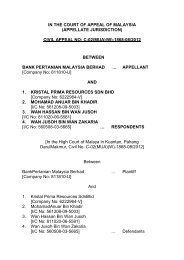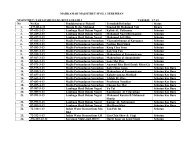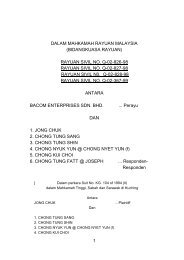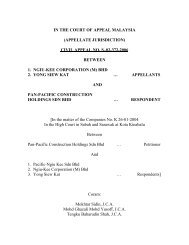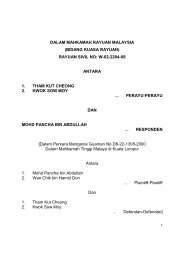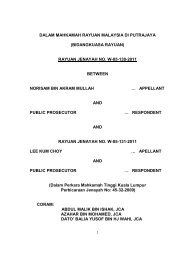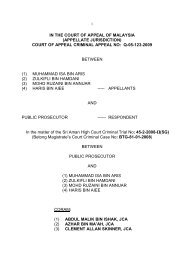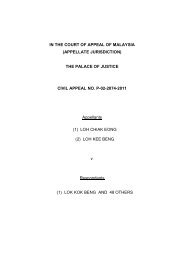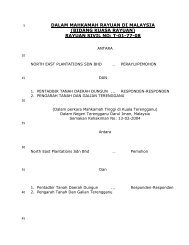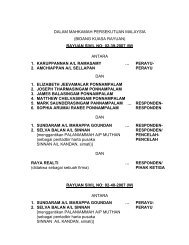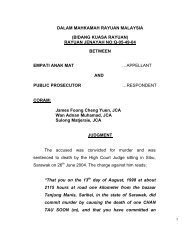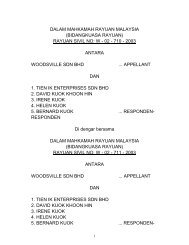rayuan jenayah no: c-05-146-2009 di antara azhar bin lazim
rayuan jenayah no: c-05-146-2009 di antara azhar bin lazim
rayuan jenayah no: c-05-146-2009 di antara azhar bin lazim
Create successful ePaper yourself
Turn your PDF publications into a flip-book with our unique Google optimized e-Paper software.
17<br />
“Section 27, which is <strong>no</strong>t artistically worded, provides an exception<br />
to the prohibition imposed by the prece<strong>di</strong>ng section, and enables<br />
certain statements made by a person in police custody to be proved.<br />
The con<strong>di</strong>tion necessary to bring the section into operation is that<br />
<strong>di</strong>scovery of a fact in consequence of information received from a<br />
person accused of any offence in the custody of a Police officer<br />
must be deposed to, and thereupon so much of the information as<br />
relates <strong>di</strong>stinctly to the fact thereby <strong>di</strong>scovered may be proved. The<br />
section seems to be based on the view that if a fact is actually<br />
<strong>di</strong>scovered in consequence of information given, some guarantee is<br />
afforded thereby that the information was true, and accor<strong>di</strong>ngly can<br />
be safely allowed to be given in evidence; but clearly the extent of<br />
the information admissible must depend on the exact nature of the<br />
fact <strong>di</strong>scovered to which such information is required to relate.”<br />
[40] In regard to the information under section 27 of the Evidence Act<br />
1950, the High Court at pages 19 to 20 of the appeal record had this to<br />
say:<br />
“The accused had also in this case gave information lea<strong>di</strong>ng to the<br />
<strong>di</strong>scovery of the drugs which shows that he had full k<strong>no</strong>wledge of<br />
the drugs as well as control over them.<br />
As to the manner as to how to evaluate the information lea<strong>di</strong>ng to<br />
<strong>di</strong>scovery I referred to the case of Krishna Rao Gurunathi v PP [<strong>2009</strong>]<br />
2 CLJ 603:<br />
It should be borne in mind that the hurdles to overcome for the<br />
admission of cautioned statement and for <strong>di</strong>scovery statement are quite<br />
<strong>di</strong>stinct. The former demands voluntariness at the time of making it and<br />
that there should be absence of any form of oppression, inducement,<br />
threat or promise to the maker. The latter does <strong>no</strong>t require those<br />
prerequisites save that the court has the <strong>di</strong>scretion to exclude it on the<br />
ground that its preju<strong>di</strong>cial effect outweighed its probative value. (See:<br />
Goi Ching Ang v. Public Prosecutor [1999] 1 CLJ 829; Kesavan<br />
Petchayo v. Public Prosecutor [2003] 1 CLJ 846).<br />
In the case before me the probative value of the information lea<strong>di</strong>ng<br />
to <strong>di</strong>scover far outweighed its preju<strong>di</strong>cial value.”<br />
[41] When asked as to the whereabouts of the drugs, the appellant<br />
in<strong>di</strong>cated to SP5 the <strong>di</strong>rection where the drugs were hidden by puckering



